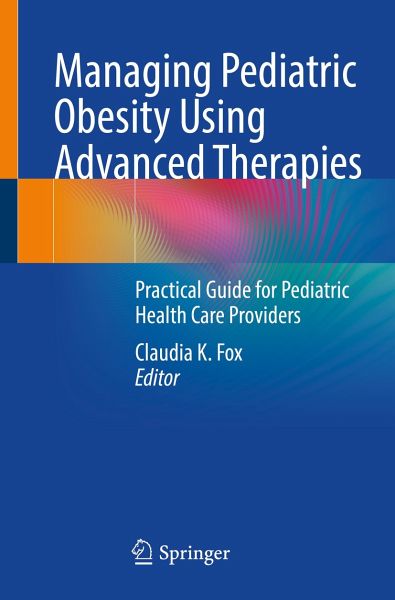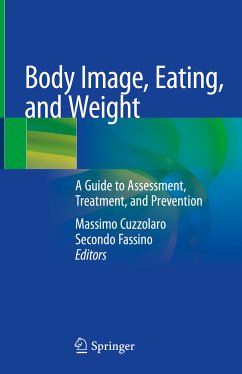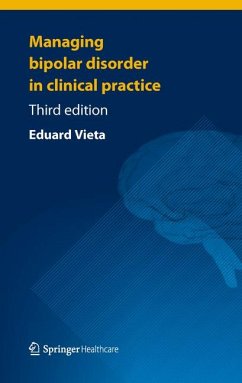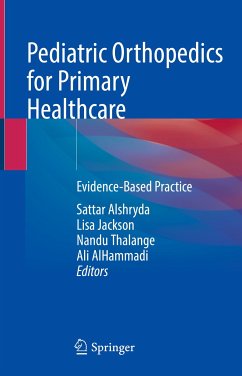
Managing Pediatric Obesity Using Advanced Therapies (eBook, PDF)
Practical Guide for Pediatric Health Care Providers
Redaktion: Fox, Claudia K.
Versandkostenfrei!
Sofort per Download lieferbar
60,95 €
inkl. MwSt.
Weitere Ausgaben:

PAYBACK Punkte
30 °P sammeln!
Treatment of pediatric obesity, to date, has largely focused on lifestyle therapy. While lifestyle therapy is essential for obesity management, it is often insufficient, particularly for youth who have severe forms of the disease. Underlying the limitations of lifestyle therapy is the recognition that obesity is a biological disorder of the energy regulatory system and accordingly, to effectively manage obesity, the underpinning pathophysiology needs to be addressed. This pathophysiology can be targeted with more advanced therapies including anti-obesity medications and metabolic and bariatric...
Treatment of pediatric obesity, to date, has largely focused on lifestyle therapy. While lifestyle therapy is essential for obesity management, it is often insufficient, particularly for youth who have severe forms of the disease. Underlying the limitations of lifestyle therapy is the recognition that obesity is a biological disorder of the energy regulatory system and accordingly, to effectively manage obesity, the underpinning pathophysiology needs to be addressed. This pathophysiology can be targeted with more advanced therapies including anti-obesity medications and metabolic and bariatric surgery, two treatment strategies supported by the American Academy of Pediatrics.
Written by leading experts in the field, A Practical Guide to Managing Pediatric Obesity is comprised of thirteen chapters, each including suggested protocols and case examples. The first chapter details the complex pathophysiology of obesity and sets the stage for why advanced therapies are critical for effective obesity management. Chapter two provides guidance on best practices for communicating with patients and families about obesity. The next three chapters provide direction on how to do a comprehensive patient assessment, and employ dietary and physical activity interventions. The heart of this guidebook is the chapter on pharmacological treatments, which details the mechanisms of action, research results, and recommendations for anti-obesity medication selection and monitoring outlined in a step-by-step fashion. Pre- and post-operative care for the pediatric bariatric surgery patient is detailed in the next chapter. Assessment and management of behavioral and psychological complications, type 2 diabetes, non-alcoholic fatty liver disease, polycystic ovary syndrome, hypertension, and dyslipidemia are covered in the subsequent five chapters. Syndromic and monogenic obesity are discussed in the final chapter.
Written by leading experts in the field, A Practical Guide to Managing Pediatric Obesity is comprised of thirteen chapters, each including suggested protocols and case examples. The first chapter details the complex pathophysiology of obesity and sets the stage for why advanced therapies are critical for effective obesity management. Chapter two provides guidance on best practices for communicating with patients and families about obesity. The next three chapters provide direction on how to do a comprehensive patient assessment, and employ dietary and physical activity interventions. The heart of this guidebook is the chapter on pharmacological treatments, which details the mechanisms of action, research results, and recommendations for anti-obesity medication selection and monitoring outlined in a step-by-step fashion. Pre- and post-operative care for the pediatric bariatric surgery patient is detailed in the next chapter. Assessment and management of behavioral and psychological complications, type 2 diabetes, non-alcoholic fatty liver disease, polycystic ovary syndrome, hypertension, and dyslipidemia are covered in the subsequent five chapters. Syndromic and monogenic obesity are discussed in the final chapter.
Dieser Download kann aus rechtlichen Gründen nur mit Rechnungsadresse in A, B, BG, CY, CZ, D, DK, EW, E, FIN, F, GR, HR, H, IRL, I, LT, L, LR, M, NL, PL, P, R, S, SLO, SK ausgeliefert werden.












